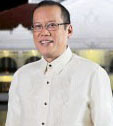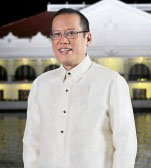Amendment of cabotage law eyed
THE public can expect more infrastructure projects, including airports and ports, in the coming years to boost the local economy, President Benigno Aquino III said in his fourth State of the Nation Address delivered last Monday.
 “What we can expect in the years to come: airports and ports to facilitate commerce and tourism; roads to ensure that we all reap the maximum benefit from these big-ticket projects; power plants that will generate enough energy and fuel the development of industry,” Aquino said in his more than an hour-long speech.
“What we can expect in the years to come: airports and ports to facilitate commerce and tourism; roads to ensure that we all reap the maximum benefit from these big-ticket projects; power plants that will generate enough energy and fuel the development of industry,” Aquino said in his more than an hour-long speech.
He cited the completion of projects long planned but took many years to complete, such as the Aluling Bridge in Ilocos Sur that was planned in 1978 but completed only in March this year, and the Ternate-Nasugbu Road connecting Cavite, Batangas and Metro Manila that was 20 years in the making.
He took note of the Tagumbao Bridge in Gerona, Tarlac as an example of “the dividends of good governance” of Public Works and Highways Secretary Rogelio Singson. Until now, residents take a roundabout route crossing two towns to reach their village.
Now the bridge is under construction at a cost of P226 million, lower than the approved P334 million, “because of good management and prudent spending”. Aquino said the over P108 million savings can be used to build a dike and carry out river training projects.
He gave credit to successful public-private partnerships, and described the Daang Hari-North Luzon Expressway link road as the “fastest PPP project that has been awarded in any administration, with no short cuts in the processes.”
Aquino cited Laguindingan Airport in Misamis Oriental that was finally opened on June 15 after a “one generation” long leap from idea to implementation.
He said the government is also “upgrading and modernizing the Tacloban Airport, the Bicol International Airport, the New Bohol Airport, the Mactan Airport, and the Puerto Princesa Airport all at the same time.”
The President asked for understanding for the “complex issue” involving renovation of the Ninoy Aquino International Airport 3 that had undergone two arbitrations, one of which the government lost because of a reversed decision due to a technicality.
On the issue of warranties for the completion of the NAIA 3 rehabilitation, the government wanted to be certain there won’t be defects afterwards, so when the original contractor was willing to give a warranty, the government agreed, he said. Aquino said it is “not acceptable” to find defects after renovations and then spend more money for repairs.
Meanwhile, the President said the European Union’s lifting of the air ban on Philippine Airlines was “a fruit of our reforms in the aviation industry” and ensures that aviation safety in the country meets international standards.
Amendment of cabotage law
The President raised the possibility of amending the cabotage law, which prohibits the transport of goods or passengers within the Philippines by a vessel or an aircraft registered in another country.
“Let us amend the Cabotage Law in order to foster greater competition and to lower the cost of transportation for our agricultural sector and other industries,” he said.
In a recent interview with PortCalls, Maritime Industry Authority administrator Maximo Q. Mejia Jr. tackled the issue of cabotage, saying “we need first to upgrade domestic shipping to a certain level where we could seriously engage in a debate on cabotage.”
He noted “discussion is pointless at present because we need to elevate the domestic shipping industry,” especially with the upcoming economic integration of the Association of Southeast Asian Nations in 2015. He said integration itself is a form of cabotage within ASEAN.
“If we’re really seriously looking at taking away cabotage, first we need to make sure we can compete with the Thais and the Vietnamese and others,” Mejia said.
Customs malpractices
The President, at one point, trained his gun at the Bureau of Customs (BOC), taking its officials to task for failing to stop malpractices in the bureau.
He said the BOC has personnel “trying to outdo each other’s incompetence”. Rather than “collecting the proper taxes and preventing contraband from entering the country, they are heedlessly permitting the smuggling of goods, and even drugs, arms, and other items of a similar nature into our territory.”
The Department of Finance to which the BOC belongs, Aquino said, estimates that more than P200 billion in revenues “slips through our borders without going into public coffers.”
The rebuke prompted Customs Commissioner Rozzano Rufino Biazon to offer his resignation, via his Twitter account. Following his tweet, Biazon said: “President’s reply: “Ruffy we both know the difficulties in the agency you are trying to reform. My confidence in you remains the same.”
Traffic
Turning to Metro Manila’s traffic problem, which Aquino said, is estimated to cost the economy P2.4 billion a day in losses, efforts are under way to decongest the streets via the Integrated Transport System, under which terminals will be set up in less-congested areas and where provincial buses will be diverted.
“For the buses that force themselves onto already-crowded roads, we will construct terminals in areas with less traffic,” Aquino said, adding that the terminal in Parañaque is now in use, and those in Quezon City and Muntinlupa “are already lined up. Provincial buses will be permitted only up to these terminals, so they do not add to the congestion.”
Other solutions are the two connector roads that will join the North and South Luzon Expressways, a project which, he said, was already planned in the 1970s but had got stuck because of laws that required contractors to partner with a presidential crony’s company during the Marcos era.
Now, Aquino said, “We have an eight-kilometer, four-lane elevated expressway that will connect C3 road to Caloocan, crossing España, up to PUP in Sta. Mesa. There is also a more than 14-km six-lane elevated tollway extending from Balintawak to Buendia in Makati.”
He said when the common alignment of these two roads – a 5½-km, six-lane elevated expressway from PUP in Sta. Mesa, crossing Osmeña and Quirino Avenue, to Buendia in Makati – is opened to the public, the two-hour drive today from SLEX to NLEX will take only 15 minutes.
“What once was a three-hour drive from Clark to Calamba will be reduced by almost half to an hour and forty minutes,” benefiting 55,000 motorists daily with time and fuel savings. As well, pollution will be cut and commerce and tourism will flourish in a “win-win situation”.
Aquino praised Singson for reforms that have saved billions of pesos for the DPWH, such as doing away with letters of intent, which bidders once used to inflate costs and gain more profit; simplified bidding processes to open projects to more contractors; and reasonable costs of doing projects.
Singson’s “honest leadership has allowed the DPWH to save P18.4 billion that has gone to other meaningful projects, Aquino said.
Photo from www.president.gov.ph





